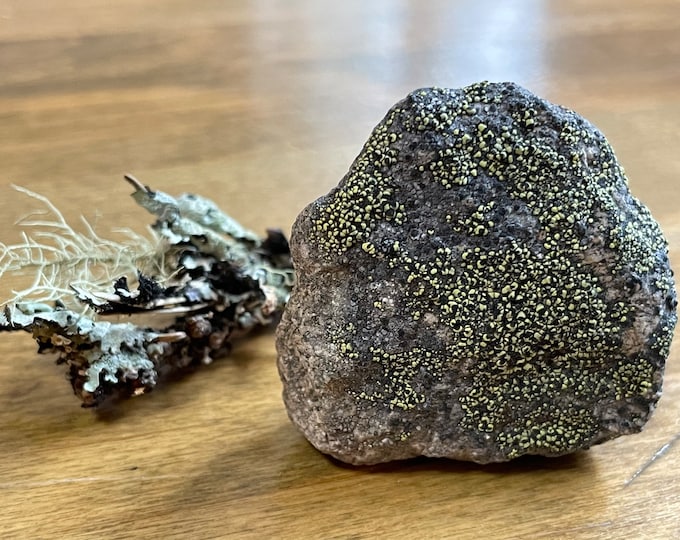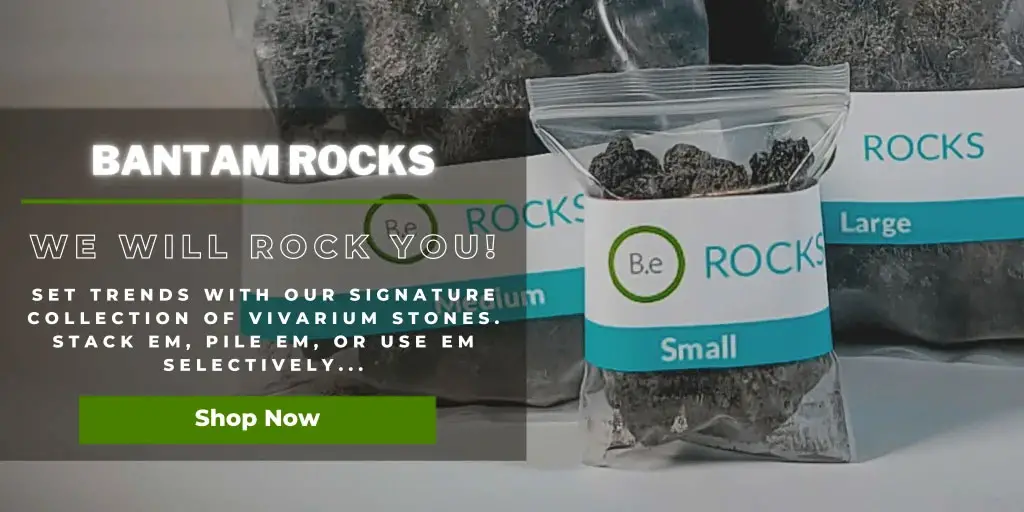When it comes to traditional vivarium rocks, Granite was the preferred look for many years.
Most faux rock aquarium backgrounds find inspiration from coarse-grained rocks.
The aged aesthetics, availability, and inert ability of this stone made many hobbyists consider very few alternatives without question.
With a rise in popularity with much lighter weighted stones in the market, Granite hasn’t been the highly sought-after vivarium hardscape it once was.
This article will shine insight into the Dimensional Stone and provide a complete guide on how to use it in an aquascape.
| Quick Stats: | |
|---|---|
| Traditional Name | Granite |
| Common Names | Alkali Granite, Dimension Stone, Granodiorite, Pegmatite, Aplite |
| Origin | Continental Crust |
| Habitat | Mountain Ranges, Valleys, Peaks |
| Color | White, Gray, Pink |
| Density (g/cm3) | 2.65 – 2.75g |
| Hardness | 6 – 6.5 |
| PH Impact | Neutral (No Effect) |
| Elemental Type | Intrusive Igneous Rock (Quartz & Feldspar) |
Table Of Contents:
ToggleWhat Is Granite Rock?
Granite Rocks are intrusive igneous rocks composed of mostly quartz and Feldspar minerals.
This stone is slowly formed from volcanic activity under the earth’s crust.
The process of cooled magma will take millions of years to develop causing grains to cement together large enough for the human eye to see.
‘Intrusive lava rocks like Granite differ from extrusive stones like basalt due to the developmental stage taking place before the rocks are exposed to the atmosphere.


Granite Rock Facts
Granite is one of the oldest stones on record, varying from 1.7 to 2.6 billion years old.
It is commonly referred to as the Dimensional Stone, this rock is durable enough to be neatly cut into uniform pieces.
Depending on the color of the rock as well as the minerals cemented into it during its formation, it will be identified as a specific type of granite.
Other names often referred to as Granite Rock are Alkali Granite, Granodiorite, Pegmatite, and Aplite.
A cemented rock like Granite is durable enough to withstand extreme conditions and won’t weather away easily.
This makes the Dimensional Stone very inert and suitable for all types of vivariums.
Modifying this rock either through tumbling or polishing will make it all the harder and ensure longevity throughout the life of the enclosure.
Description
Granite is generally a light-colored stone with grains big enough to see with the natural eye.
The grain particles are minerals that have begun to crystallize due to the slow formation and high heat temperatures.
Colors will range between pink, white, and gray depending on the particular minerals that make up the rock.
Granite is a rather heavy rock compared to some of the other igneous rocks we’ve covered.
This rock’s average density is between 2.65 to 2.75 grams per centimeter.
The weight of Granite paired with a hardness level averaging 6 to 6.5 makes it a very hardy rock that will withstand the test of time.
Habitat
Granite is a plutonic Lava Rock meaning it forms under the earth’s crust.
On occasion, it will become exposed to the atmosphere through the process of tectonic plates pushing against each other.
When this happens, Granite Rock is pushed out above the sedimentary rock layer of the ground.
Further causing the stone to produce bright-colored mountains and valleys.
This is the most natural way to find the continental bedrock without digging around active volcanoes for it.
Environmental Influence
Like most igneous rocks, Granite doesn’t have much of an effect on water parameters.
The hardness and pH levels should remain the same due to Granite being an inert stone.
In some cases, if the rock is added to a softwater setup and the pH begins to rise, there may be rusting iron minerals present somewhere along the surface.
Promptly remove the Granite and clean the stone thoroughly.
Vivarium Preference
Granite is well-suited for many types of vivariums.
It does well above ground as well as fully submerged in both hard and soft water conditions.
As I mentioned earlier, this type of rock can even be constructed into a three-dimensional background.
The surface can be left coarse allowing epiphyte-type plants and bacteria to anchor better…
Or smoothed out for easy use in breeding.
Advantages
Granite Rocks are very hard stones to work with.
Part of the reason it’s so popular in other industries is because of its ability to be cut into proportion without breaking.
When it does break, it does it in the form of fractures.
Using a combination of cutting and breaking can warrant some interesting concepts.
Another really interesting takeaway with Granite is its ability to retain temperature.
This type of stone is great for basking areas where reptiles can stay warm long after the lights go off.
On the contrary, placing a slab of Granite in a cool spot of the tank can provide a nice place for pets to eat, rest, and “chill out.”
Disadvantages
Besides the obvious density being negative with working with Granite, leeching in some cases can be a problem as well.
Even though this rock is generally inert for the most part, no two pieces of Granite consist of the same mineral makeup.
One section of the stone could easily consist of more iron than another.
This could present a problem in some vivariums.
In a freshwater setup, some level of metals like iron is beneficial to plant life within the tank.
High levels of similar metals could prove fatal for sensitive inhabitants.
The best-case scenario would be to clean and test the rocks before using them.
Buy Granite Rock
Granite is a very common rock used in many industries.
It can be found relatively easily in most local hardware stores or rock quarries.
If for any reason you are unable to find it there, here’s a link to order a small amount of it online.
Click the image below to find out more about the current price and other relative info:


Granite Rock Recommendations
Here are a few more useful tips when working with Granite for the first time.
Inspect the rocks to see what type of minerals the rock consists of.
Based on the color as well as the sturdiness of the stone, you should be able to identify the possible minerals compacted into the formation of this rock.
Before placing any type of rock in an acidic vivarium, always do a quick alkaline test to ensure there are no possibly toxic metals contained within the rock.
As usual, clean the Granite Rock to remove access dust or loose particles from the surface.
Cleaning Granite Rock
In most cases, newly acquired Granite will need slight preparation before going into a vivarium.
This will matter more for aquariums rather than terrariums since unclean stones can cause water to change color.
Regardless of the setup, potential toxins could present a danger to pets as well as plants so better to be safe than sorry.
Begin by placing stones in a bucket of cold water.
Scrub and redip each stone thoroughly in the bucket of water.
Rinse and repeat this process until you can place stones in a clean bucket of water and observe no noticeable change in color.
Avoid using chemicals, boiling, or strong water pressure on the rocks so they aren’t worn down drastically and lose their aesthetics.
Breaking Granite Rock
With a hardness score of 6, Granite Rocks can be a bit more difficult to strategically break than most other aquarium rocks.
A chisel and hammer kit will more than likely be required to break the stone up into small parts.
This rock breaks into fracture-type pieces so don’t worry about trying to get the perfect shape.
If an attempt to chisel out cave formations or arches causes the stone to split into undesired parts, simply superglue the rock back together.
Sprinkle specs of similar colored sand over the newly glued seams to cover unnatural separation.
Rocks Similar To Granite Rock
When designing a new enclosure for the first time, it would be best to stick with one type of stone to use as a hardscape.
Furthermore, this type of rock can be hard to come by depending on where you are located in the world.
If for any reason, you find Granite difficult to acquire or simply want to consider something lighter or less expensive…
There are a wide variety of stones to consider.
Here are some other types of stones one might find are worth taking a look at in place of Granite Rocks:
Conclusion
In comparison to other types of vivarium rocks, Granite has a legacy.
Even though it may not be the lightest stone to use in large quantities, it can still prove to be an aesthetically pleasing rock that will outlast the enclosure.
I love the concept of carving custom scapes with this stone and using it in miniature or nano tanks.
What are your thoughts on using Granite Rock for aquariums or other types of vivariums?





